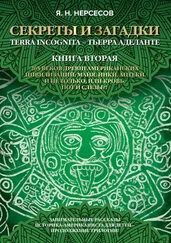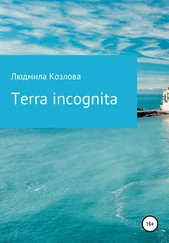Then all the plans of Nature were reversed. Islands of floating ice, loaded with white bears, ran aground among the palm-trees of the torrid zone, and the elephants of Africa were tossed amidst the fir-groves of Siberia, where their large bones are still found to this day. […] At the sight of the disorder reigning in the heavens, man, in despair, despaired of the safety of the earth. […] Every thing was swallowed up by the waters: there remained on the earth no trace of glory and felicity of the human race, in those days of vengeance, when Nature involved in one ruin all the monuments of her greatness. 9
The cascading waters roared into the Atlantic, where they triggered dreadful tides, spreading ‘vast beds of shells’ and forcing ‘counter-tides’. This, he claims, is how expanses of sedimentary deposits came to be formed. The Biblical reference to a flood lasting forty days seems to match the timescale of Bernardin de Saint-Pierre’s vision of the polar ice caps melting away entirely. After 150 days, the waters once again froze at the poles and land once more emerged from the waves. Bernardin de Saint-Pierre’s Biblical perspective is informed not so much by Genesis as by the Book of Job’s ‘darksome doors’. In a highly significant passage, he calls on his readers to bear witness as he denounces the ignorance of his contemporaries, challenging them before turning to the Providentialism that was later to undermine his reputation.
What conclusions can be drawn from knowledge, or otherwise, of the earth’s age and history at the turn of the nineteenth century? The picture is one of hesitancy and contradiction, with the European scholarly elite split between two opposing visions. This ignorance extended to the earth’s history and morphology. In the opening years of the new century, how did Goethe, Jane Austen and Chateaubriand picture the interior of the earth and the planet’s history? This question is nigh on impossible to answer, because we have no way of measuring what they did not know. What historians must bear in mind is that people were divided between two visions. Before we turn to the mysteries of the polar regions, one of the earth’s most widely debated enigmas in the half-century following 1755, we will look not at the earth’s history, but at what people believed its internal structure to be.
1 1. Alain Corbin, Le Territoire du vide: L’Occident et le désir de rivage (1750–1840). Paris: Aubier, 1988; English translation The Lure of the Sea: The Discovery of the Seaside in the Western World, 1750–1840, tr. Jocelyn Phelps. Cambridge: Polity, 1994.
2 2. Jacques-Bénigne Bossuet, Œuvres. Paris: Gallimard, 1961, p. 1472.
3 3. Jacques-Bénigne Bossuet, A Universal History from the Beginning of the World to the Empire of Charlemagne, tr. James Elphinston. London: David Steel, 1767, p. 11.
4 4. Jean de La Bruyère, Characters, tr. N. Rowe. London: D. Browne, 1752, pp. 188–9.
5 5. Georges-Louis Leclerc, Comte de Buffon, ‘Des époques de la nature’, in Œuvres. Paris: Gallimard, 2007, pp. 1193–1342.
6 6. There is some evidence for this argument as early as Buffon’s 1749 work Théorie de la Terre [Theory of the Earth].
7 7. Osmo Pekonen and Anouchka Vasak, Maupertuis en Laponie: À la recherche de la figure de la Terre. Paris: Hermann, 2014.
8 8. Jacques-Henri Bernardin de Saint-Pierre, Studies of Nature, tr. Henry Hunter. Philadelphia: Joseph Woodward, 1835, p. 67.
9 9. Ibid., p. 69. Translation modified.
3 Imagining the Earth’s Internal Structure
At this point in history, there was no way of observing the earth’s interior directly or drilling for deep core samples. As a result, picturing the insides of the globe meant drawing on preconceived notions or ‘understanding(s) of the world based on mythological and literary discourse’. 1Contemporary thinkers sought to fill this gap in scientific knowledge with a series of ‘theories of the earth’. Naturally, they all drew on the theories in Plato’s Phaedo , which pictured Tartarus, a vast body of water at the centre of the earth, filled by an internal network of rivers of water, fire and mud. This chapter will focus on the most relevant period for this question, beginning in 1650, when theories of the earth began to be published in large numbers, all refuting the Aristotelian belief in an eternal world.
Galileo had begun asking questions about the deep core of the earth, which he imagined to be dense and solid. Theories then began to proliferate between 1650 and 1750, some of them mutually contradictory. Vincent Deparis and Hilaire Legros analyse the writings of Nicolaus Steno, Hooke, Newton, Burnet, Woodward, Whiston and Leibniz, among many others. Though there is much to be said on these early theorists, their writings are beyond the scope of this chapter, other than to point out that much was being written on the question and to outline the theories that seem to have been taken up the most widely.
The late seventeenth century saw the triumph of Flood geology in the debate on the nature of the earth’s internal structure. Thomas Burnet’s 1681 work Telluris theorica sacra [ Sacred Theory of the Earth ] argued that the Flood had brought about fundamental changes to the globe, reshaping its featureless surface to create reliefs. Burnet explained this massive impact by reference to the ‘great deep’ of the Bible – a vast internal body of water whipped into a towering storm.
John Woodward’s theory, published in 1695, doubtless convinced a wider audience. He drew on the existence of fossils to hypothesize that the Flood had completely dissolved all the matter that made up the earth, then laid down sediment ‘in concentric layers in order of gravity’. 2Woodward adumbrated, or perhaps paved the way for, the Neptunist theories of the late eighteenth century (see below, chapter 5). The following year, Whiston put forward the hypothesis that a comet might have skimmed the earth, triggering the Flood by adding a considerable quantity of water vapour to the planet’s atmosphere and causing a crack in the earth’s crust, freeing the waters of the ‘great deep’.
The theories espoused by so-called ‘Flood geologists’ were criticized by later thinkers. Henri Gautier claimed in 1721 that the globe was completely hollow and full of air. After an eruption near Santorini in 1707, the vulcanist Antonio-Lazzaro Moro theorized that inside the earth was a ball of liquid fire, while Johann Gottlob Krüger suggested in 1746 that the combined action of the Flood and an earthquake had set the entire world ablaze. The historian Vincent Deparis points out that an impressive range of models of the earth 3were put forward over the course of the sixty years preceding the Great Lisbon Earthquake. Fertile as the imaginations of these early geologists were in ascribing a major role to Noah’s Flood, the well of ideas eventually ran dry; theories on the planet’s internal structure took a new direction as research on the issue became less theoretical and imaginative. Kant’s 1756 essay ‘On the causes of earthquakes on the occasion of the calamity that befell the western countries of Europe towards the end of last year’ can be taken as the first step in this new direction. 4He began by drawing attention to how little his contemporaries knew about the depths of the earth and reminding readers that no man had ever gone deeper than one-six-thousandth part of the distance to the centre of the earth. He then stated that surface phenomena such as earthquakes will one day shed light on the planet’s internal structure.
Likewise, Buffon’s two books quoted previously discussed the earth’s interior, drawing on recent geological discoveries to develop his theory. Following Descartes and Leibniz, particularly the latter’s Theodicy , he hypothesized that the globe began as a molten mass, seeing it as akin to a cooler version of the sun. Like Kant, he underlined how much he and his contemporaries did not know, writing in 1749, ‘There are many parts of the surface of the globe with which we are entirely unacquainted, and have but partial ideas of the bottom of the sea, which in many places we have not been able to fathom.’ Men had only been able to explore ‘the mantle of the earth’ since ‘the greatest caverns and the deepest mines do not descend above the eight thousandth part of its diameter’. 5
Читать дальше
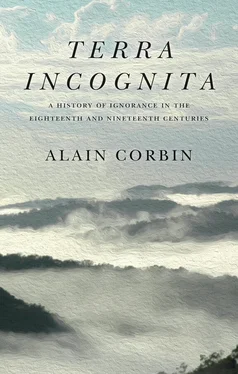


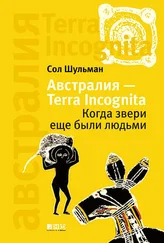

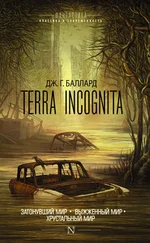
![Сергей Спящий - Время terra incognita [СИ]](/books/395082/sergej-spyachij-vremya-terra-incognita-si-thumb.webp)

